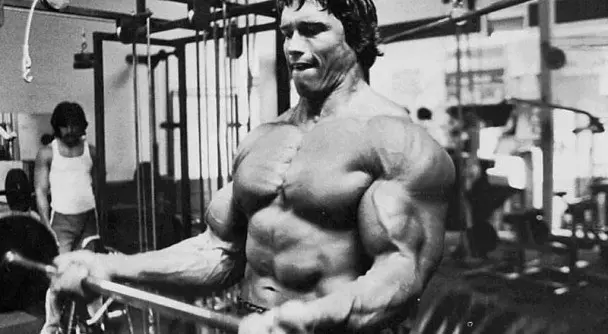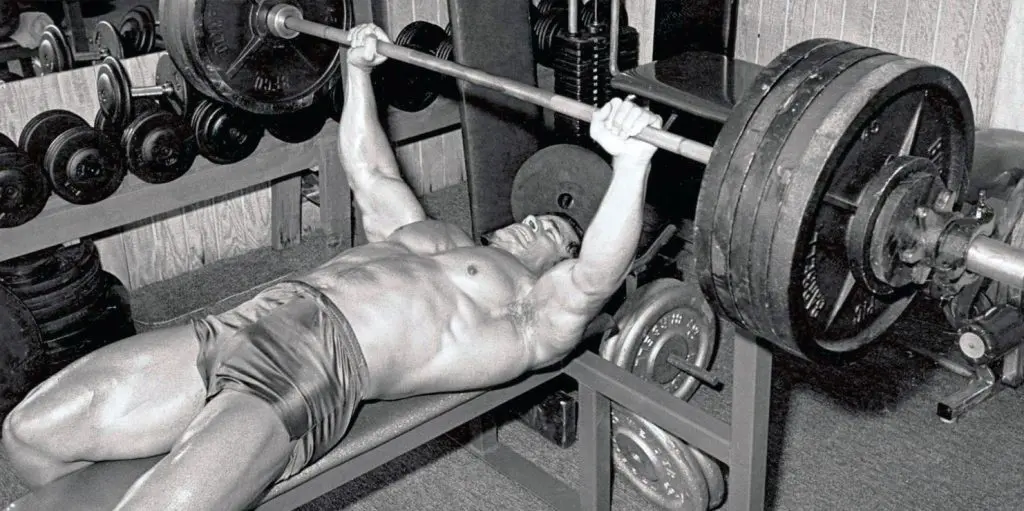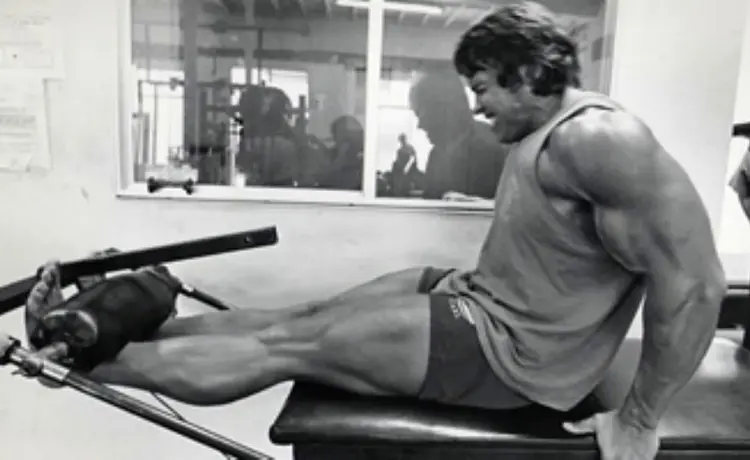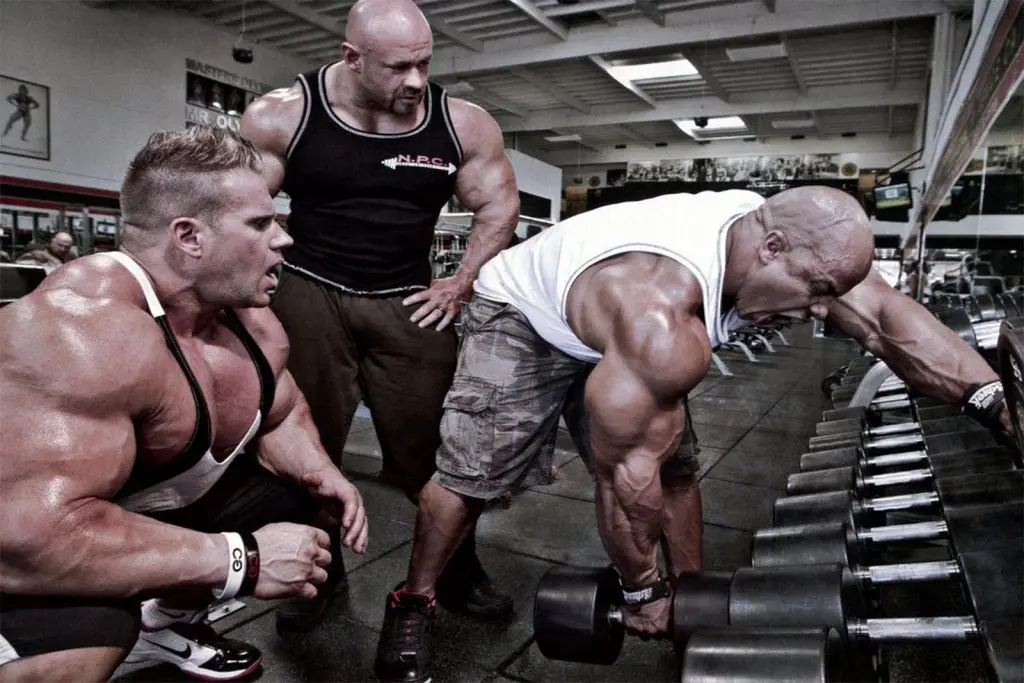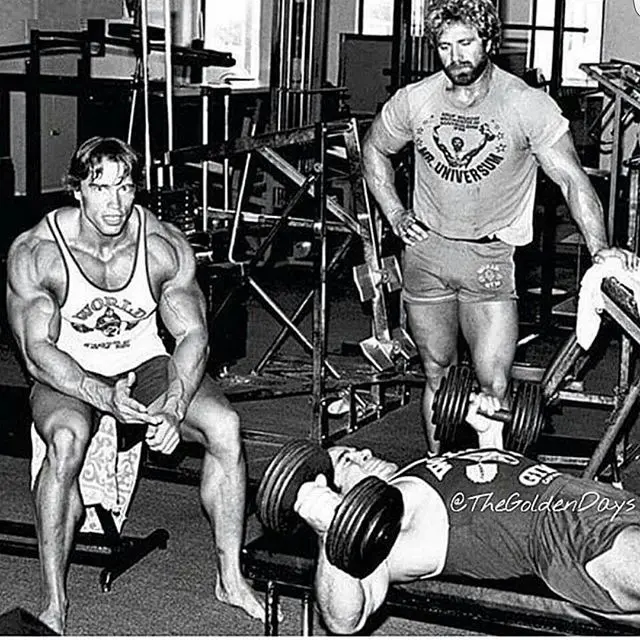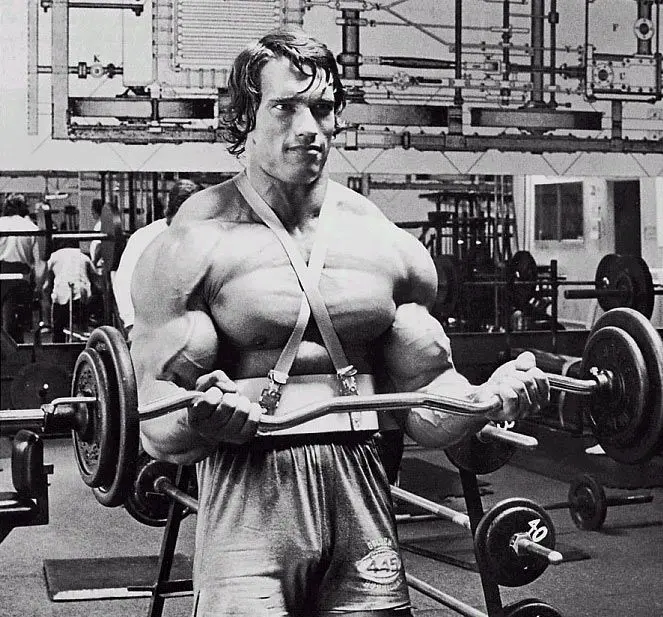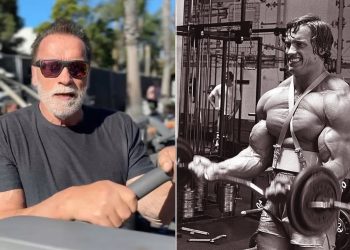Whether you do five sets of five reps, three sets of ten reps, or four sets of eight reps, you may not be training hard enough to build muscle or get stronger.
Your body is very adaptable, but it’s also very lazy. Building muscle and gaining strength use a lot of energy and resources, and those are things your body hates to waste. Subsequently, you really need to push your muscles hard if you want them to change.
Lifting heavy weights and working to muscular failure can provide the workout intensity you need to trigger the adaptations you seek. But, if you’ve been training for a few years, even these methods may have lost some of their impact.
The good news is that there are lots of methods you can use to make your workouts even more intense. We call these methods training systems.
These systems involve manipulating training variables. By changing things like sets, reps, weight, rest periods, tempo, exercise selection, and exercise order, you can make almost any workout harder.
Here are a few instances where you should use training systems:
Level Up Your Fitness: Join our 💪 strong community in Fitness Volt Newsletter. Get daily inspiration, expert-backed workouts, nutrition tips, the latest in strength sports, and the support you need to reach your goals. Subscribe for free!
- At the end of an exercise or workout when you feel you have extra energy left
- To bring up a lagging muscle group
- At the end of a period of training before you deload
- During a bulk when you are eating more food than normal
- If you are stuck in a training rut and want to kickstart your progress
Here are 13 of our favorite training systems, along with examples of how to use them.
The 13 best systems for muscle size and strength
1. Supersets
Supersets involve doing two exercises back to back. There are two main types of supersets, and while each one is different, they are both effective. With both kinds of superset, make sure you move as quickly as possible between exercises. Rest only after completing the second of the paired exercises. This may mean you have to move exercise equipment to ensure you get from one exercise to the next with minimal delay.
Agonist-antagonist supersets – for these supersets, you alternate between exercises for opposing muscle groups, e.g., chest and back, biceps and triceps, or quadriceps and hamstrings. This makes better use of your training time and may also enhance recovery. You’ll also be able to get more work done per workout as you’ll spend less time resting. More volume per workout is an excellent way to trigger new muscle growth.
Examples:
- Bench press and bent over rows
- Leg extensions and leg curls
- Shoulder press and lat pulldowns
- Crunches and back extensions
- Biceps curls and triceps pushdowns
Agonist supersets – for these supersets, do two back-to-back exercises for the same muscle group. This increases training volume and also makes the second exercise much tougher. As a rule, make sure the second exercise is easier/simpler than the first one.
Examples:
- Bench press and push-ups
- Pull-ups and lat pulldowns
- Barbell curls and dumbbell curls
- Hanging leg raises and crunches
- Squats and lunges
2. Pre-exhaust
Pre-exhaust is a variation of the superset method described above. However, with pre-exhaust, the order of exercises is much more important.
When you do a compound exercise, smaller muscles called synergists fatigue before the target muscle, which is properly called the agonist. For example, when doing pull-ups, your biceps will tire before your lats. This means your lats won’t receive the stimulation they need to grow.
With pre-exhaust, you preferentially fatigue the agonist so that the synergists are temporarily stronger. This means the agonist will receive more stimulation. To do this, you perform an isolation exercise followed by a compound exercise for the same muscle group.
Examples:
- Leg extensions and squats (for quadriceps)
- Leg curls and Romanian deadlifts (for hamstrings)
- Cable crossovers and push-ups (for pecs)
- Straight arm pulldowns and pull-ups (for lats)
- Front dumbbell raises and dumbbell shoulder presses (for deltoids)
3. Post-exhaust
Post-exhaust is the reverse of pre-exhaust. Instead of starting your superset with an isolation exercise, you do the compound exercise first. In this instance, the aim is to “finish off” the target muscle group by working around the fatigued synergist muscle.
Examples:
- Lunges and leg extensions (for quadriceps)
- Bench press and dumbbell flys (for pecs)
- Deadlifts and leg curls (for hamstrings)
- Shoulder press and lateral raises (for deltoids)
- Bent over rows and straight arm pulldowns (for lats)
4. Trisets
Where supersets involve doing two exercises in a row, trisets involve three. This adds a lot of volume to your workout and saves lots of time too. When designing your own trisets, make sure that you put your exercises in order of hardest to easiest to ensure you can give each one your best effort.
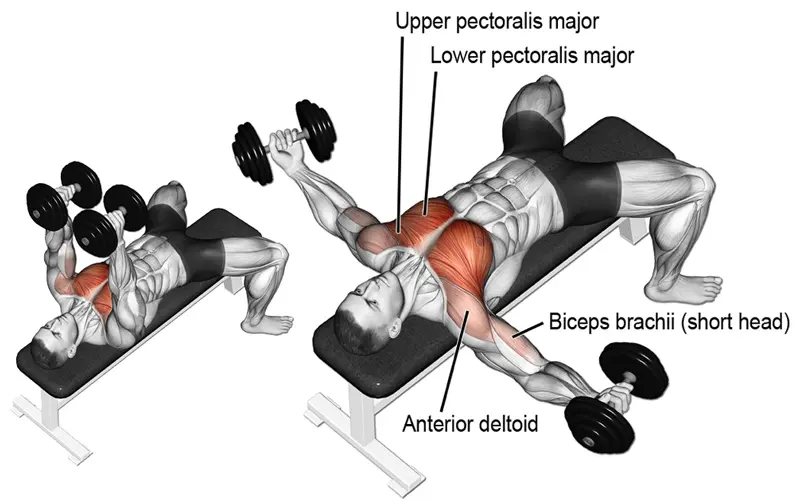
Examples:
- Barbell curls, dumbbell curls, cable curls (for biceps)
- Dips, triceps pushdowns, cable kickbacks (for triceps)
- Bench press, dumbbell flys, push-ups (for pecs)
- Squats, lunges, leg extensions (for quadriceps)
- Barbell shoulder press, upright rows, lateral raises (for deltoids)
5. Forced reps
When you reach muscular failure, you have NOT completely exhausted all your muscle fibers. However, you have exhausted enough of them that you can no longer do any more reps with the weight you are using.
With forced reps, you extend your set beyond normal failure to hit those unfatigued muscle fibers. You do this by using a free limb or, more usually, a training partner to help you continue your set.
For example, imagine you are bench pressing 140 lbs. You manage eight reps but are unable to do a ninth. Why? Because you can no longer generate 140 lbs. of force. However, you could still generate 120lbs. Your training partner lends you a little help (about 20 lbs. worth), so you can crank out a couple more reps.
This is a very stressful form of training, so you should only do a couple of forced reps per set. Also, your training partner should never end up lifting more weight than you are. Just a few pounds of assistance should be all that’s needed to help you complete another couple of reps.
6. Negative reps
You are stronger eccentrically than you are concentrically. That means you can lower more weight than you can lift. Negative reps make the most of this phenomenon.
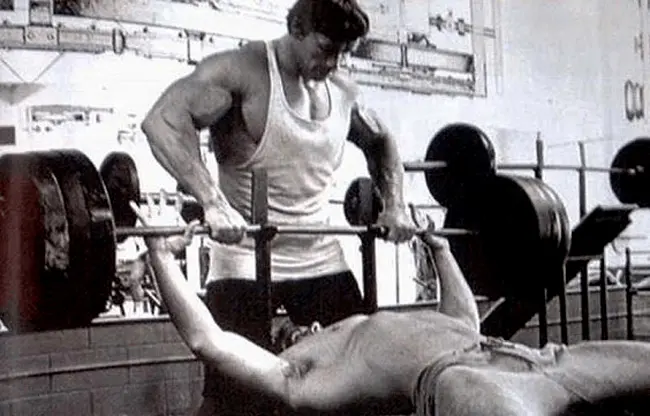
Load up your chosen exercise with 110% of your normal training weight. Get your partners to lift the weight, and then lower it slowly and under control on your own. Get your partners to lift the weight again and then repeat. Terminate your set when you are no longer able to control the descent of the load.
No training partners? No problem! Just lift the weight with two limbs and lower it with one to achieve the same effect.
Negative rep training will cause significant muscle trauma and severe delayed onset muscle soreness, so use this method sparingly.
7. Rest-pause training
Rest-pause training extends your set by giving you a mini-break when you reach failure. Simply pump out as many reps as you can, rest for 10-15 seconds, and then crank out another couple of reps. Rest another 10-15 seconds and repeat again. One or two extra micro sets should be sufficient for most exercisers.
Rest-pause training is also a useful way to allow you to do the same number of reps per set.
For example:
- 1stset – 10 reps
- 2ndset – 8 reps, plus two rest-pause reps
- 3rdset – 6 reps, plus four rest-pause reps
- 4thset – 5 reps, plus five rest-pause reps
8. German volume training
German volume training, or GVT for short, is a high-volume training system designed to increase muscle mass quickly. It was a training system used by German weightlifters who wanted to move up a weight category as quickly as possible.
The premise is simple; do ten sets of ten reps with around 60% of your 1RM (one repetition maximum) resting precisely 60 seconds between sets.
Level Up Your Fitness: Join our 💪 strong community in Fitness Volt Newsletter. Get daily inspiration, expert-backed workouts, nutrition tips, the latest in strength sports, and the support you need to reach your goals. Subscribe for free!
You might not get all ten sets at first, but that’s okay – make that your goal. When you can do the full ten sets of ten, increase the weight by around 5% and start over.
Because GVT is such a high-volume training method, you should only use it for one compound exercise per muscle group, and no more than two muscle groups per workout. However, you can finish off your training session with an isolation exercise or two.
Examples:
- Squats – 10 sets, 10 reps, 60 seconds recovery between sets
- Followed by Leg extensions, 3 sets of 10 reps, and leg curls, 3 sets of 10 reps
- Bench press – 10 sets, 10 reps, 60 seconds recovery between sets
- Followed by cable crossovers, 3 sets of 12 reps, and incline dumbbell presses, 3 sets of 8 reps
9. Escalating density training
Escalating density training, or EDT for short, challenges you to do more work within a specific time frame. This provides not only a harder workout but also an alternative to regular sets.
To do an EDT workout, select two exercises for opposing muscle groups e.g., leg extensions and leg curls. Load up each exercise with a weight you can lift 10-12 times. Set your timer for 15 minutes and then start training.
Your aim is to alternate between the two exercises and try and clock up as many reps of both exercises as you can in the allotted time. It doesn’t matter how many reps you do per set; just keep going back and forth, keeping your rests/transitions as short as possible.
At the end of the allotted time, make a note of how many reps you completed, and then try and beat that number next time you train. When you can do 30% more reps than your first attempt, it’s time to up the weights and start over.
You can adjust the length of your timeframe according to your needs. If you prefer to do lots of exercises per workout, 10-12 minute work periods are fine. If you prefer to do fewer exercisers per workout, 15-20 minutes will be better. You could also mix and match time frames, e.g., 20 minutes for major muscle groups and 10 minutes for smaller ones.
10. Drop sets
If you don’t have a training partner to help you with forced or negative reps, drop sets are the next best thing. In fact, if you train alone, drop sets are one of the best training systems you can use. They are probably the most popular training system in gyms today.
As discussed earlier, just because you have reached failure and are unable to complete another rep unaided, does not mean you have truly exhausted your muscles. You are simply too tired to generate the force needed to lift the weight you are using.
With drop sets, also known as strip sets, you reduce (or drop) the weight by just enough to allow you to crank out a few more reps. You can drop the weight just once or a couple of times as preferred, but you should probably end your drop set when you reach around 50% of your starting weight.
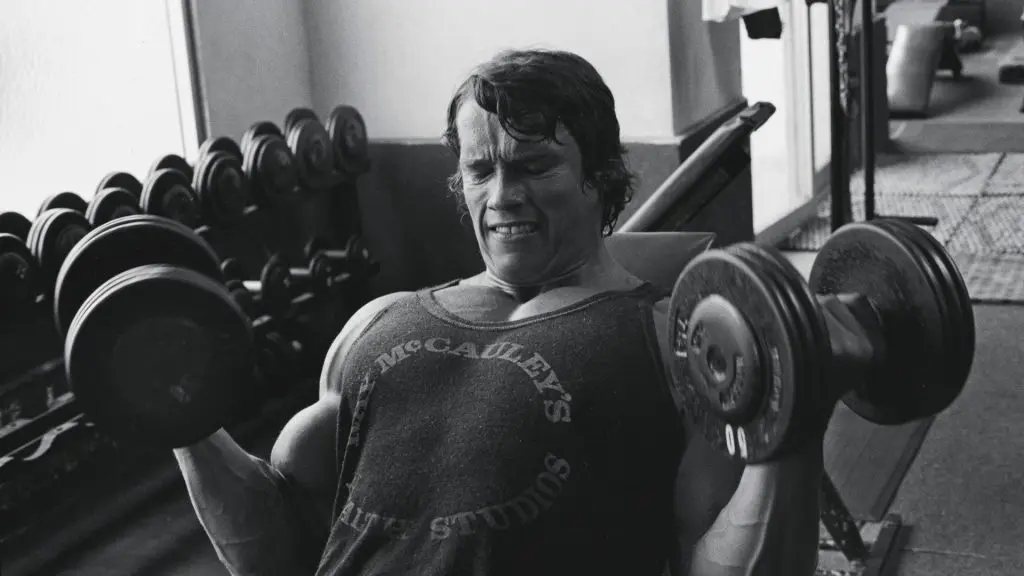
The size of the drops depends on the increments you have available, but 10-15% is usually about right. The number of reps you do after each drop depends on how much you reduce the weight by each time and may vary from set to set as you get more tired.
Example:
- 12 reps with 60 lbs. (couldn’t manage 13 reps)
- Reduce weight to 50 lbs. (1stdrop)
- Rep out to failure
- Reduce weight to 40 lbs. (2nddrop)
- Rep out to failure
- Reduce weight to 30 lbs. (3rddrop)
- Rep out to failure and done!
It doesn’t matter how many reps you do after each drop; just do as many as you can. Do not rest any longer between drops than it takes to reduce the weight. For this reason, drop sets work best with resistance training machines and dumbbells. Changing the weight on barbells is too time-consuming.
There is a variation of this method called mechanical drop sets. Instead of reducing the weight as you fatigue, you move from a weak position to a stronger one. This is a useful system if you have limited exercise equipment but still want to take your workout beyond failure.
Examples:
- Good mornings -> Romanian deadlifts -> regular deadlifts
- Steep incline bench press -> flat bench press -> decline bench press
- Wide grip chin-ups -> neutral grip pull-ups -> underhand grip pull-ups
- Push-ups with feet raised -> push-ups on toes -> push-ups on knees
- Barbell shoulder press -> barbell push-press
- Overhead squats -> front squats -> back squats
As with regular drop sets, move quickly from one exercise to the next to avoid recovering too much.
11. 50% training
50% training is an excellent alternative to straight sets. Each set is taken to failure, which means it’s a very intense form of training. However, it’s also self-regulating, and the number of sets you do will depend on how strong and energetic you are feeling.
Simply do your first set to failure, rest exactly 60 seconds, and then do another set with the same weight. Because of fatigue, you won’t be able to do as many reps before being forced to stop. Rest for 60 seconds again and do another set. Keep going until you are unable to complete 50% of the number of reps in your first set.
Example:
- 1stset – 12 reps
- Rest 60 seconds
- 2ndset – 10 reps
- Rest 60 seconds
- 3rdset – 8 reps
- Rest 60 seconds
- 4thset – 7 reps
- Rest 60 seconds
- 5thset – 5 reps (less than 50% of 12 reps, so you are all done!)
If you weren’t feeling great, you might find that you hit 50% of your opening set quite quickly. But, if you are feeling strong, it could take you five or more sets. Just go with the flow and allow your fatigue levels to dictate the number of sets you do.
12. Matrix training
Matrix training is one of the most popular training systems and the first one that a lot of people try. Also called 21s, it’s commonly done with biceps curls but can also be used with other exercises.
Matrix training involves breaking an exercise down into three ranges of motion:
- The outer range
- The inner range
- The full range
Once this is done, you perform seven reps in each phase to total 21 reps – hence the alternative name for matrix training. This makes one set, and you can do several sets per exercise or just use it for your last set to finish the target muscle group off.
Matrix sets keep your muscles under tension for longer and also cause a lot of muscle damage, which is what makes it such an effective way to build muscle. You’ll also get a good pump, which makes them even more gratifying.
Example:
As biceps curls are the most commonly performed matrix training method, we’ll use that as our example.
- Starting with your arms straight, curl the weight up until your forearms are parallel to the floor and then lower them again. Do seven reps.
- Next, with your forearms parallel to the floor, curl your weights up to shoulder height and then lower them back to halfway. Do seven reps.
- Finally, do seven full reps, from full arm extension to full flexion.
Matrix training can be applied to virtually all exercises – even squats! Just use your imagination.
13. Iso-holds
Iso-holds are isometric or static pauses designed to eliminate momentum and increase your time under tension. Both of these elements can take an ineffective workout and make it much more productive and demanding.
To use iso-holds, simply pause mid-rep for a second or two.
Examples:
- Pause squats – pause at the bottom for two seconds
- Pause deadlifts – pause with the bar at knee-height for two seconds
- Pause bench press – pause with the bar just above your chest for two seconds
- Pause chin-ups – pause with your chin above the bar for two seconds
- Leg extensions – pause with your legs straight for two seconds
The main thing to remember with paused reps is that you should avoid pausing in any position where the weight is supported by your bones rather than your muscles. For example, when your arms are straight during pressing movements or your knees are straight in squats and leg presses.
Wrapping up
With 13 different training systems to choose from, you have more than enough ways to create an entire year of varied and productive workouts. Combine these systems with some different splits, a variety of set and rep schemes, and a couple of different exercises per muscle group, and you have everything you need to create a fun, varied, and effective training plan.
So, lagging body part? Stuck in a training rut? Need a new challenge?
Use one of the 13 best training methods outlined above!

